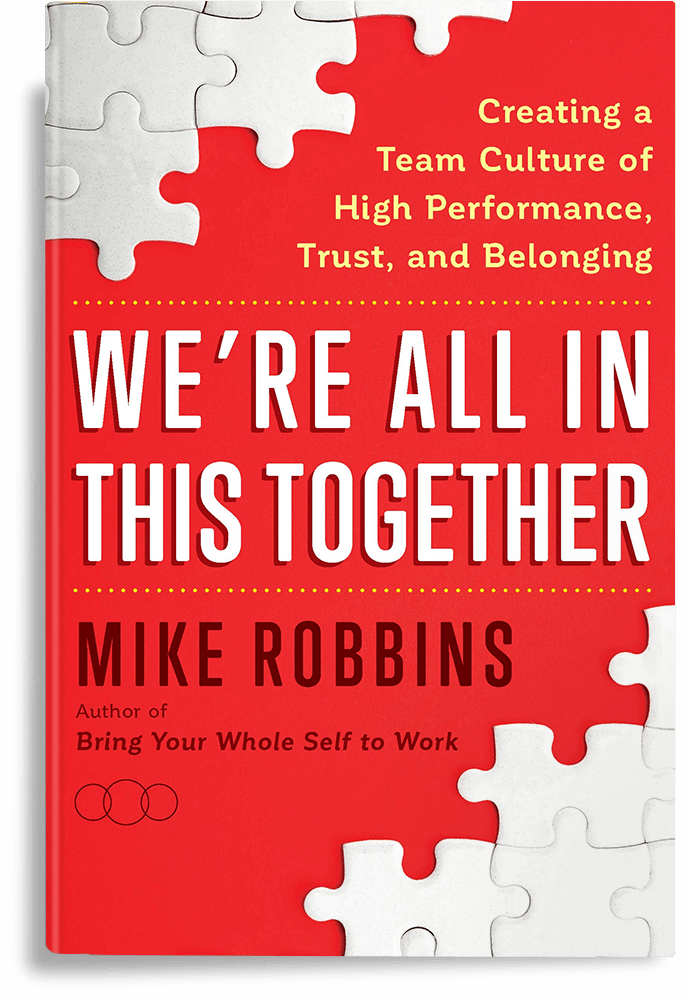Blog
I truly believe that we’re all doing the best we can given whatever our current situations and resources may be.
However, many of us can be extremely critical of ourselves and others. And even though I’ve been teaching and practicing the power of appreciation for more than two decades, when I find myself feeling scared, threatened, or insecure (which happens more often than I’d like it to), I notice that I can be quite critical (of myself and other people).
Sadly, as I’ve learned throughout my life, being judgmental doesn’t help, feel good, or lead me to what I truly want in my relationships, work, and life.
Doing the Best We Can
I heard the late, great Louise Hay (bestselling author and founder of Hay House, the publisher of my three most recent books), say a number of years ago, “It’s important to remember that people are always doing the best they can, including you.”
The power of this statement continues to have an impact on me to this day. And, although I sometimes forget, when I do remember that we’re all doing the best we can given whatever tools we have and the circumstances we’re experiencing, it usually calms me down and creates a sense of empathy and compassion for the people I’m dealing with and for myself.
When we take a step back and remember that most of the time people aren’t out to get us, we can save ourselves from unnecessary overreactions and stress. And extending this understanding and kindness towards ourselves can significantly improve our lives and relationships.
As the Dalai Lama so reminds us, “If you want others to be happy, practice compassion. If you want to be happy, practice compassion.”
How to Practice Compassion
Here are some things you can do to practice compassion.
1. Give people the benefit of the doubt
Most of the time people have good intentions. Many of us, myself included, have been trained to be cautious and suspicious of others, even seeing this as an important and effective skill in life and business. However, we almost always get what we expect from people, so the more often we give people the benefit of the doubt, the more often they’ll prove us right, and the less often we will waste our precious time and energy on cynicism, suspicion, and judgment.
2. Don’t take things personally
I love the great saying, “You wouldn’t worry about what other people think about you so much, if you realized how little they actually did.” The truth is that most people are focused on themselves much more than on us. Too often we take things personally that have nothing to do with us. This doesn’t mean we let people walk all over us or treat us in disrespectful ways (it can be important for us to speak up and have healthy boundaries). However, when we stop taking things so personally, we liberate ourselves from needless upset, defensiveness, and conflict.
3. Look for the good
We almost always find what we look for. If you want to find some things about me that you don’t like, consider obnoxious, or get on your nerves – just look for them, I’m sure you’ll come up with some. On the flip side, if you want to find some of my best qualities and things you appreciate about me, just look for those – they are there too. As Werner Erhard said, “In every human being there is both garbage and gold, it’s up to us to choose what we pay attention to.” Looking for the good in others (as well as in life and in ourselves), is one of the best ways to find things to appreciate and be grateful for.
4. Seek first to understand
Often when we’re frustrated, annoyed, or in conflict with another person (or group of people), we don’t feel seen, heard, or understood. As challenging and painful as this can be, one of the best things we can do is to shift our attention from trying to get other people to understand us (or being irritated that it seems like they don’t), to seeking to understand the other person (or people) involved in an authentic way.
Understanding others can be difficult, especially when the situation or conflict is very personal and emotional. However, seeking to understand is one of the best ways for us to liberate ourselves from the grip of criticism and judgment, and often helps shift the overall dynamic. Being curious and empathic of another person and their perspective doesn’t mean we agree with them, it simply allows us to get into their world and see where they’re coming from – which is essential to letting go of judgment, connecting with them, and ultimately resolving the conflict.
5. Be gentle with others (and especially with yourself)
Being gentle is the opposite of being critical. When we’re gentle, we’re compassionate, kind, and loving. We may not like, agree with, or totally understand what someone has done (or why), but we can be gentle in how we respond and engage with them. This is about having a true sense of empathy and perspective. And, the most important place for us to bring a sense of gentleness is to ourselves. Many of us have a tendency to be hyper self-critical. Sadly, some of the harshest criticism we dole out in life is aimed right at us. Another great saying I love is, “We don’t see people as they are, we see them as we are.” As we alter how we relate to ourselves, our relationship to everyone else and to the world shifts in a fundamental way.
Everyone around us – our friends, co-workers, significant other, family members, children, clients, and even people we don’t know or care for – are doing the best they can, given the resources they have. When we remember this and come from a truly compassionate perspective (with others and with ourselves), we’re able to tap into a deeper level of peace, appreciation, and fulfillment.
Liked this article? Here are three more:
Appearance vs. Substance
How to Be Flexible
Worry Never Works
Many of us spend a lot of time worrying. About bills, relationships, health, finances, work, the state of the world, and more. Although this is completely understandable, especially these days, and it’s something I find myself struggling with at times in pretty significant ways…I’ve learned throughout my life that worry never works.
Worrying is actually detrimental to our health, well-being, and our ability to experience what we truly want in life. When we worry, we’re simply preparing to be upset in the future – assuming that something bad will happen and creating a dress rehearsal for our anger, disappointment, and/or frustration.
Worry doesn’t work because it keeps us fixated on potential problems without thinking about productive solutions. It amplifies stress, impairs decision-making, and harms our mental and physical health. Often, worries are beyond our control or blown out of proportion, leading to unnecessary distress. Instead, focusing on actionable steps, maintaining perspective, and practicing mindfulness, we stay stuck in the negative trap of imagining all the ways things could go wrong.
Worrying has simply become a habituated and unconscious behavior for many of us. We tend to find ways to justify this – thinking that worrying proves we really care, helps keep us focused, or allows us to stay on top of things in a responsible way.
While this all makes sense, on a deeper level I’ve realized over the years that worrying is just an erroneous attempt to control the uncontrollable – life.
Given that we all know, at least to some degree, that worrying doesn’t really work and actually makes things worse – why do we do it?
If Worry Never Works, Why Do We Do It?
We worry as a natural response to uncertainty, potential threats, or challenges in our lives. It’s a way for our minds to try to anticipate and prepare for problems, but it can also stem from a desire for control or fear of the unknown. While worrying can sometimes serve a protective function, it often becomes excessive and counterproductive, leading to increased stress and anxiety.
Here are some of the main reasons we worry so much…
1. We’re Trained to Worry
We’ve been trained to worry throughout our lives – by our parents, teachers, friends, family members, co-workers, the media, our culture, and more. From the time we were kids, we’re taught (directly and indirectly) that we’re supposed to worry about lots of things – crime, illness, money, our children, being taken advantage of, pollution, and so much more. While some may argue that there are many things we should be concerned and aware about, “worrying” about any of these things doesn’t make them better or help us address them in a specific way.
2. We Don’t Know How to Express Our Real Emotions
We’re not usually encouraged or even all that good at acknowledging, addressing, and expressing our real emotions. Worry is often a suppressed form of fear, anger, shame, or other emotions we find difficult to deal with. Because worrying is much more socially acceptable than expressing our authentic fear (or anger, guilt, helplessness, shame, sadness, confusion, overwhelm, etc.), we tend to actively worry about things all the time. Our inability to express our real emotions, which is usually the source, is what keeps worry in place.
3. We Worry That Something Bad Will Happen
Finally, we worry that if we stop worrying, something really bad will happen. As ironic as it may seem, we continue to worry, somehow thinking we are protecting ourselves. In actuality, when we worry we’re just setting ourselves up for more stress and fear…and in a strange way, sometimes even attracting more negative outcomes and experiences to us by being so fixated on all that could go wrong.
How to Stop Worrying
Here are a few things you can do to let go of worry and operate with a deeper sense of peace and freedom:
1. Notice What You Worry About
Like most aspects of life and growth, the first step is authentic awareness. When we become conscious of our own habits, thoughts, and patterns as it relates to worrying, we can start to make some healthy choices and changes. As you notice your own tendency to worry, have compassion with yourself and see if you’re willing to let it go.
2. Identify and express your real emotions
Worry often originates from underlying emotions such as fear, anger, sadness, shame, or powerlessness. By acknowledging and embracing these emotions, we can navigate through them and release their energy. This process of emotional release enables us to transform our worries and ultimately free ourselves from their grip.
3. Take conscious and courageous action
Worry often renders us inactive; stuck in a state of negative thinking or fear-based reactions. Taking conscious and courageous actions in the face of our fear and worry can be one of the most empowering things for us to do. This is not about frantic, random, erroneous activity (just for the sake of doing something), this is about us taking deliberate action as a way of moving through our fear in a direct and authentic way.
Worrying is a natural aspect of our human experience. It’s important not to criticize ourselves for it, but rather to recognize its presence. Worry can significantly impact our success, well-being, and sense of fulfillment. By acknowledging this and understanding that worry never really works, we can delve into what is really going on within us, transforming it into a force for positive change.
What do you worry about most? Are you willing to let go of worry? If so, what will that take? Share your thoughts, action ideas, insights, and more below.
Liked this article? Here are three more!
Appearance vs. Substance
Why Do We Struggle to Apologize Authentically?
Why Do We Judge Others?
What does the saying, “Appearance versus substance,” mean to you?
Here’s a statement I’ve heard many times…
“It’s better to look good than feel good.”
I understand this sentiment and have felt it myself. However, as I think about this and the implications for our lives and our culture, I’m deeply disturbed by this notice. It really isn’t better to look good than to feel good, but many of us live as if this is true, especially in today’s world.
The problem with the saying, “It’s better to look good than feel good,” is that it prioritizes outward appearance over inner wellbeing. While it’s important to take care of our appearance to some extent, focusing solely on looking good can lead us to neglect our physical and mental health. It can also lead to unhealthy behaviors like extreme dieting, excessive exercise, or even substance abuse, all of which can be detrimental and even deadly.
Ultimately, this saying promotes a superficial mindset that places undue emphasis on external appearances at the expense of genuine wellness.
Appearance vs. Substance
For me personally, concerns about my own appearance – both my physical appearance and other people’s perceptions of me – have caused me a great deal of pain, suffering, and stress throughout my life. More often than I would like to admit, and even to this day, I waste a good amount of energy worrying about how I look physically, wondering what others think about me, and spending time and even money in an effort to appear as positively as I can on lots of superficial levels.
From listening to many people, paying attention to the messages in the media, and noticing the state of our culture, I know I’m not alone in this.
Why do we do this?
Fundamentally it comes down to an issue of appearance vs. substance. Many of us would rather have a nice house, a nice car, a great body, a lot of money, and all the outward material signs of happiness, wealth, and success…rather than actually being truly happy and fulfilled, feeling a sense of abundance and gratitude, and genuinely creating success and peace in our lives. We don’t do this in a malicious way or to intentionally sabotage ourselves, I think we do much of this unconsciously and get caught up in a variety of social pressures and expectations.
The Importance of Going Deeper
The challenge we face is that we must all dive deeper, being honest about our identities, emotions, and intentions. We must then adjust our thoughts, beliefs, and actions accordingly. By prioritizing our genuine desires—such as self-acceptance, fulfillment, and inner peace—the rest often falls into place. Even if it doesn’t, redirecting our focus toward authenticity remains essential, regardless of external outcomes.
In other words, if we first stop and appreciate how great we already are and how wonderful our life already is…and, we focus on the true SUBSTANCE of who we are and what we want to create (not just the superficial APPEARANCE of those things), we can experience a grounded sense of trust and gratitude for ourselves and our lives, as they actually are right now.
In doing so, we will be able to take our energy and attention back from those things that do not matter (like how we look, what others think about us, our material obsessions, etc.) and put them on the things that are more important (like loving ourselves, loving others, being grateful, giving, and more).
Diving deeper into who we are reveals our true essence. By aligning our thoughts, beliefs, and actions with who we are, we create genuine wellbeing, deeper connections, and ultimately more fulfilling lives.
Liked this article? Here are three more:
Why Do We Struggle to Apologize Authentically?
Why Do We Judge Others?
How to Get Honest Feedback
When you apologize, do you apologize authentically?
Apologizing can be a tricky thing. As essential and important as I know apologizing is to creating peace, reconciliation, trust, and connection in my relationships, sometimes I don’t want to do it or I do so in a completely inauthentic and manipulative way.
Recently, this has been in my face even more than normal. I’ve noticed my tendency at times to over apologize, to do so with ulterior motives, or, even worse, I find myself apologizing for who I am in a way that is disrespectful and unkind to myself. None of these really serve me or my relationships, nor are they very authentic apologies.
Why is it Difficult to Apologize Authentically?
An authentic apology can be challenging because of our ego, fear of vulnerability, or even lack of empathy. Taking ownership requires humility and introspection, which can be uncomfortable. An authentic apology also demands emotional intelligence and genuine remorse, which can be a bit of a bruise to our ego or pride. It can also cause a shame response.
For many of us, apologizing can seem scary and even weak. We worry that if we apologize somehow we’ll be admitting we’re wrong (and therefore the other person is right), that it might be used against us in some negative way, or that we’re giving up our power by apologizing.
All of these things make sense – based on our ego-based culture and our obsession with blaming others. While understandable and normal, our inability or unwillingness to apologize authentically causes a great deal of pain and conflict in our relationships.
Shame vs. Remorse
The main reason that we aren’t often all that comfortable with authentic apologies is that we operate from a paradigm of shame instead of remorse. Shame, which is a very powerful and oftentimes debilitating emotion (mostly because we don’t like to admit it, own it, or feel it), is based on the notion that we are fundamentally flawed. When we view ourselves, others, and life through a lens of shame, it invariably becomes a matter of assigning blame and fault. Consequently, we strive to shield ourselves from criticism while seeking opportunities to assign blame elsewhere, avoiding accountability in the process. Does this pattern sound familiar?
Remorse, on the other hand, is about us realizing that we’ve done or said something we wish we hadn’t. This is not about beating ourselves up, making ourselves wrong, or even blaming ourselves…it’s about taking responsibility in an adult way. When we have a sense of remorse, we can make amends with people genuinely, own our impact on others, and apologize without shame or guilt.
No matter how mindful or purposeful we are, we’re bound to act and speak in ways we later regret, occasionally causing hurt or offense to those around us. These moments offer valuable chances for personal growth, as well as deeper self-awareness and empathy. An authentic apology plays a crucial role in resolving conflicts and strengthening bonds, which in turn fosters authentic relationships.
How to Expand Your Capacity to Apologize Authentically
Here are a few things to think about and do to expand your capacity for authentic apologies:
Tell the truth about how you relate to apologizing.
Ask yourself how you feel about apologizing and assess how authentic you are when apologizing to people. Do you over apologize? Do you refuse to apologize? Do you do it just so people won’t be angry with you?
What is your relationship to apologizing and how free and genuine are you about it? Answering these questions honestly will give you important insights into this.
Look at your life and relationships and see where you can apologize.
Reflect on your life and relationships, particularly where conflict exists. Identify areas where you’ve hesitated to take ownership or offer genuine apologies. Are you open to doing so, not just for the sake of the relationship, but also for your inner tranquility?
As you think about doing this, ask yourself how you can apologize in a genuine way (not simply to get what you want).
Alter your relationship to apologizing.
As you honestly assess your approach to apologizing and identify areas in your life and relationships where apologies are lacking, consider how you can reframe your perspective to feel empowered and motivated, rather than avoidant or manipulative. Shifting your mindset towards apologies can offer greater freedom, comfort, and ease in your interactions.
This is something that may seem somewhat simple or not all that important on the surface, but it is fundamental to our fulfillment in life and is quite big as we take a deeper look at it. The more conscious and aware we are about apologizing, the more growth and transformation can take place in our relationships.
Be kind to yourself – this is not something that comes easy to most of us. But, when we’re willing to really take this on and alter our relationship to apologizing, our relationships and our lives can transform in a profound and positive way.
How do you feel about apologizing? Who do you need to apologize to? How can you apologize in a more authentic way? Share your thoughts, action ideas, insights, and more below.
Liked this article? Here are three more!
Why Do We Judge Others?
How to Get Honest Feedback
Asking For Help






